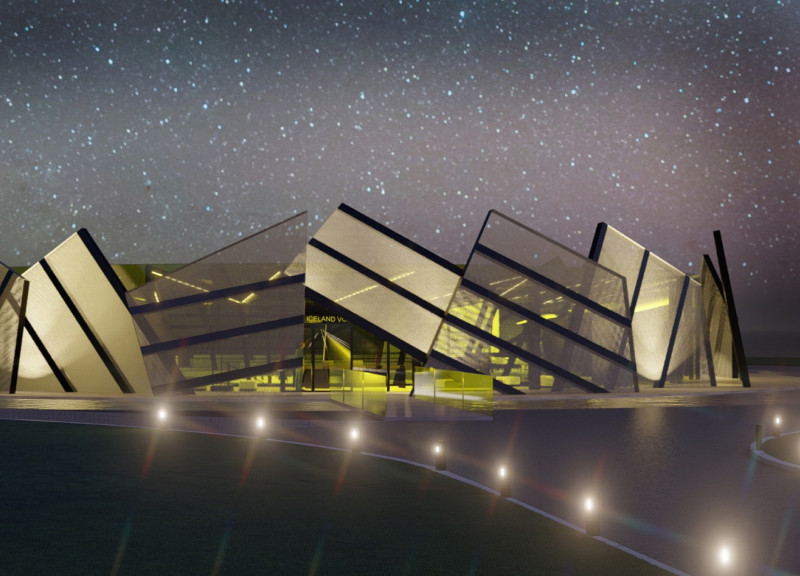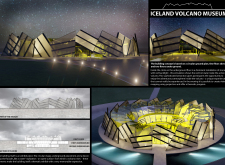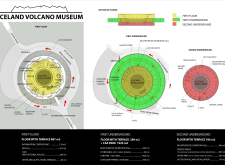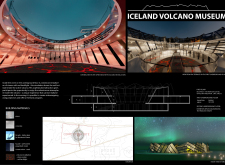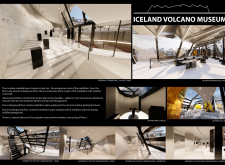5 key facts about this project
This project represents a sophisticated approach to museum design, emphasizing both functionality and aesthetics. By integrating the thematic elements of volcanic landscapes into the architecture itself, the museum creates a distinct identity that resonates with its geographical context. Visitors are encouraged to explore and learn about the formations and phenomena that characterize Iceland, fostering a deeper appreciation for the forces of nature.
The Iceland Volcano Museum is organized with a clear functional strategy. It features a circular layout, symbolically embodying a volcano's crater and enhancing visitor flow. The structure boasts multiple levels, including two underground floors dedicated to immersive exhibits. The use of large expanses of glass in combination with aluminum framing serves not only to connect the interior with the breathtaking landscape but also to maximize natural light within exhibition spaces. The architectural design thoughtfully balances openness with defined areas, making it an inviting environment for visitors.
Key details of the museum's architecture include the unique angular rooftop, which reflects the irregular shapes found in volcanic rock formations. This design choice reinforces the connection to the geological themes while also creating an engaging visual narrative for the building itself. The subterranean exhibition areas feature innovative installations that simulate volcanic activity, using features such as red backlighting to create an atmosphere that mimics the intensity of molten lava. This intentional design choice enhances the educational experience, drawing visitors deeper into the subject matter.
One of the standout aspects of the project is its use of materials that resonate with environmental themes and geological characteristics. The careful selection of concrete, stone, and expanded metal aligns the building with its volcanic context. These materials not only provide structural integrity but also contribute to the overall aesthetic, ensuring that the museum is not just a space for learning but also an architectural statement in itself. Steel elements provide support for the complex rooftop design, while the expanded metal allows for light and visual connection without compromising the structural requirements of the building.
The Iceland Volcano Museum succeeds in creating a dynamic learning environment that invites exploration and interaction. Its unique design approaches, such as interactive technology, ensure that visitors engage with the educational content in a meaningful way. The layout encourages a narrative journey, allowing guests to traverse through various exhibits that progressively build on the themes of geology and volcanic activity. This thoughtful arrangement enhances learning and engagement, making the museum a comprehensive destination for both locals and tourists.
With its integration of architectural plans, sections, and thoughtful design ideas, the Iceland Volcano Museum serves as a model for contemporary museum architecture that embraces both educational and experiential elements. For those interested in architectural innovation and design details, further exploration of the project presentation will provide deeper insights into how the museum's design effectively embodies its mission and the geological narrative it aims to convey.


